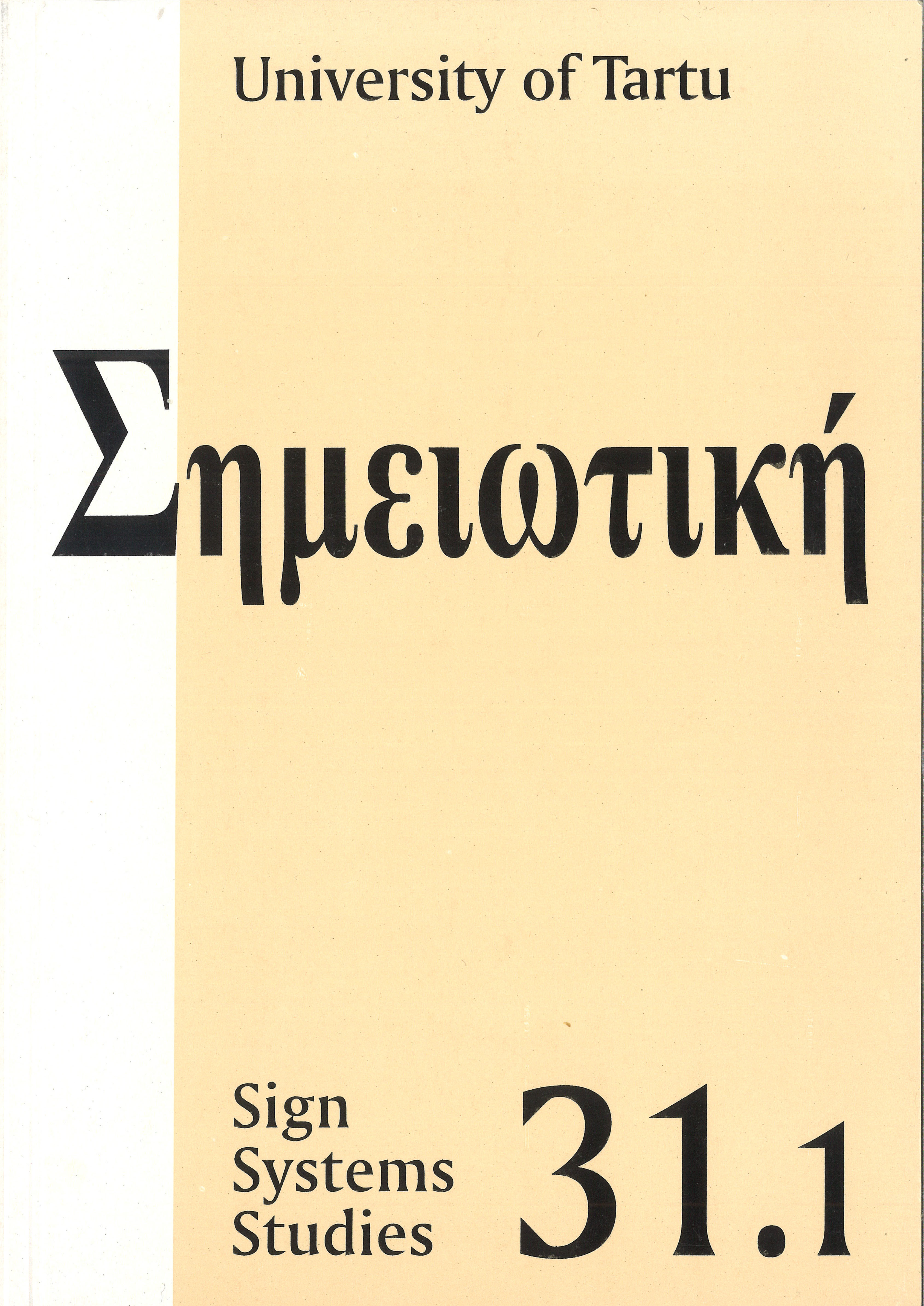Strange, very strange, like in a dream: Borders and translations in ‘Strogij Yunosha’
DOI:
https://doi.org/10.12697/SSS.2003.31.1.07Abstract
Semiotics applied to translation studies produces an original approach that is generating scientific texts of high interest. On the other side, the notion of “translation” in a broad sense appears very important within semiotics itself, as in Ch. Peirce’s and J. Lotman’s thought. Distinguishing between translation studies’ influences on semiotics and semiotics’ influence on translation studies becomes increasingly difficult. In this article a synthesis is tried: the Soviet film ‘Strogij Yunosha’ is analyzed using the tools of both disciplines. At first the concept of “strange” is analyzed from a semiotic point of view, looking also for etymological reasons to classify strangeness as simple difference or as inimicality. Then cultural implicit is considered as the problem of mediation between Self and Other, both in a collective and in an individual (psychological) sense. The ways of relating to the Other are then considered in the light of a systemic approach to the cultural polysystem, in which the least unit or subsystem is the individual. The film is then decomposed in many “worlds”, and their borders and relations are viewed in the light of the aforementioned approaches. Such translatological analysis of the film allows to hypothesize why it was banned from the Soviet regime.


